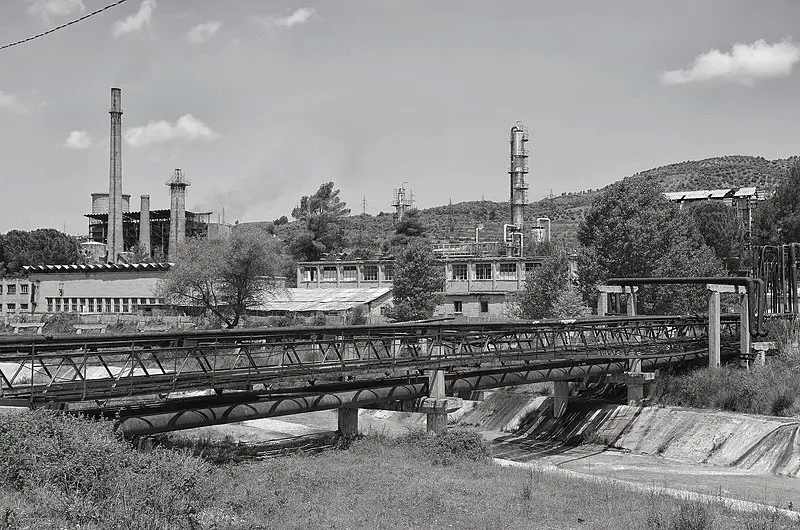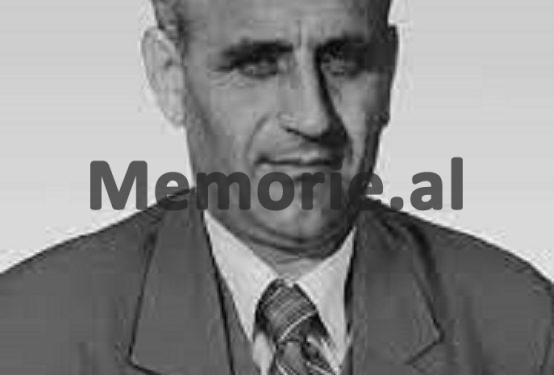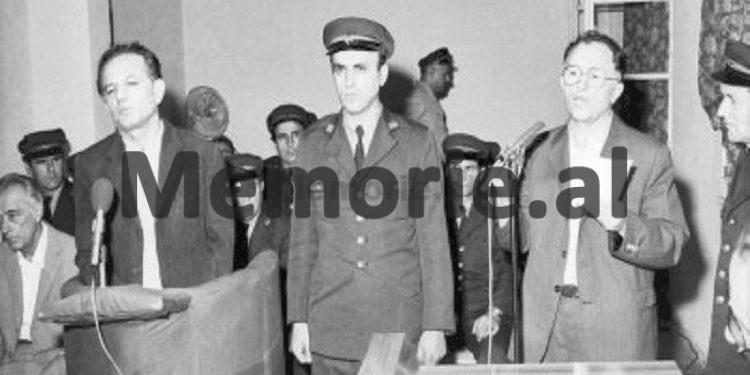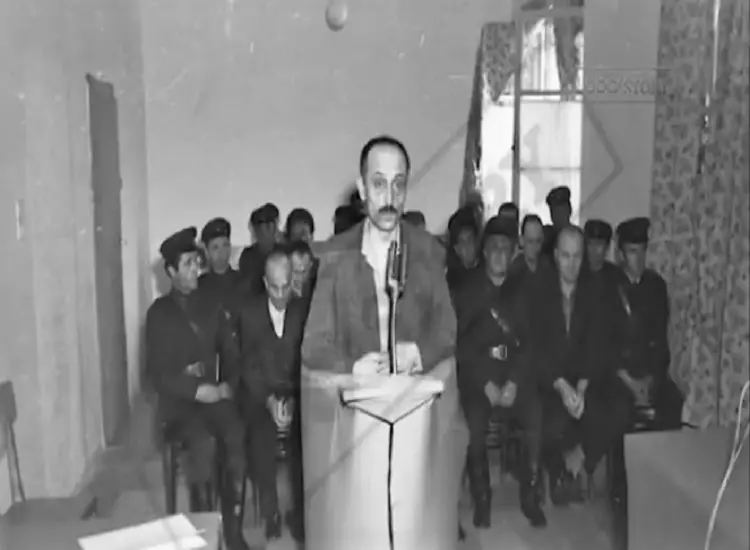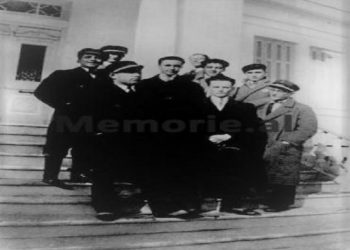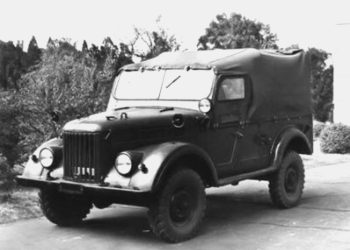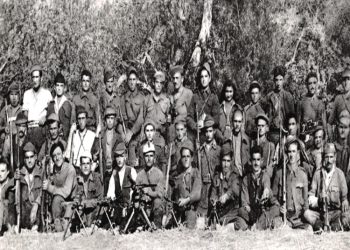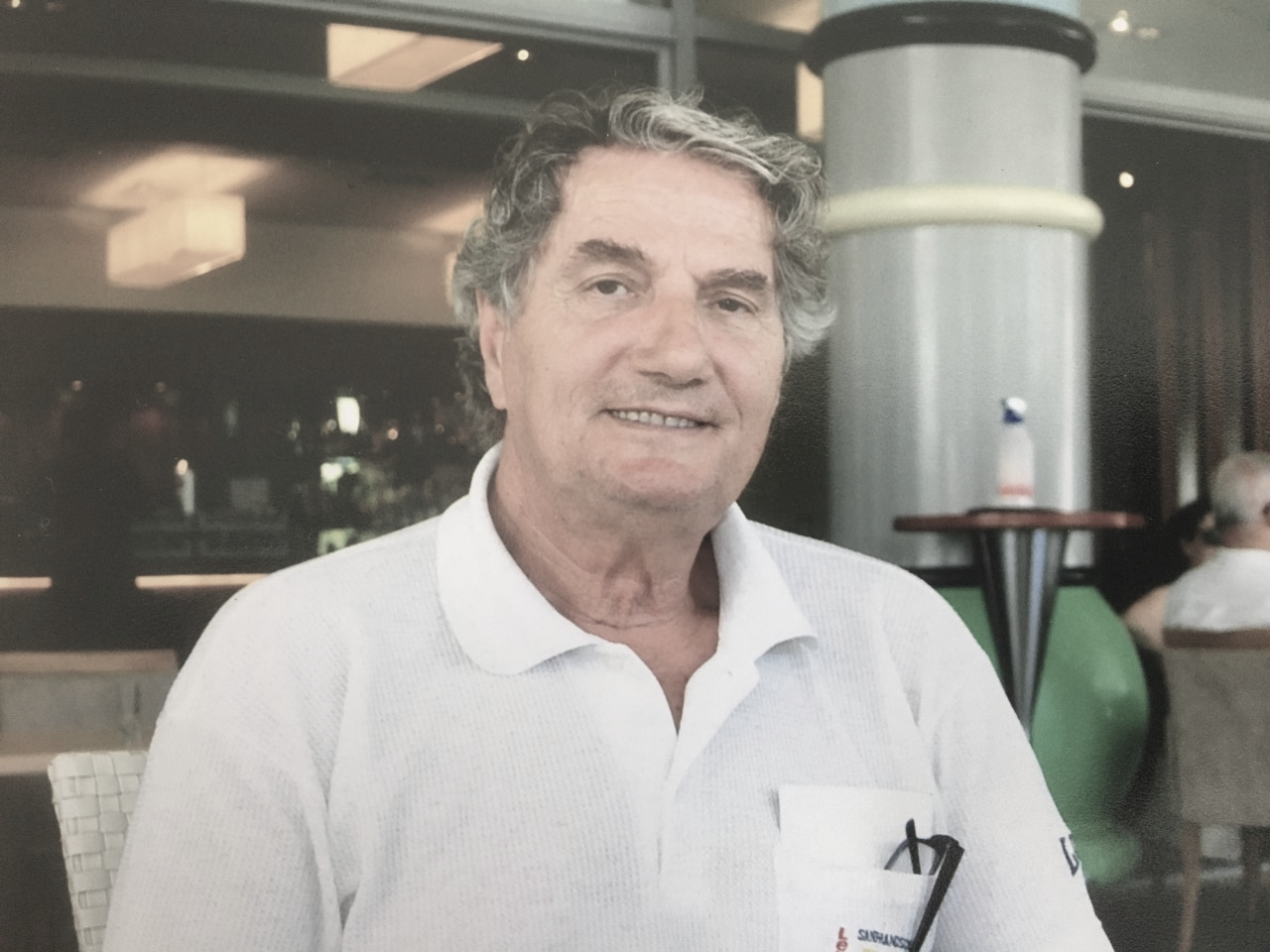By Aurora Damini
Second part
– The tragic story of 1975, where Enver Hoxha, in the most barbaric way, hit the oil sector, punishing the country’s best specialists with shooting, prison and exile!-
Memorie.al publishes the rare and unknown testimonies of Vangjush Kokonoz, a senior engineer who graduated from the University of Bucharest in the exploitation of oil resources, who worked for more than 50 years in the oil sector. , (from a simple engineer to the highest management positions in the oil sector), which narrates in detail all that great drama that happened in 1975 in the oil sector, where after some anonymous letters that a dispatcher (night watchman) from the city of Patos for the senior leadership and personally Enver Hoxha, the big storm happened in one of the most vital sectors of the Albanian economy such as oil, where after several meetings, meetings and activities where some of the main leaders of Political Bureau of the ALP, such as Adil Çarçani, Abdyl Këllezi, Haki Toska, Koço Theodhosi, etc., a great disaster occurred, where the cream of the Albanian specialists in the oil sector were imprisoned, interned and shot. as: Koço Plaku, Protoko Murataj, Lipe Nashi, Beqir Aliaj, Milto Gjikopulli, Jani Konomi, Dhimitër Stefa, etc.! Engineer Kokonozi is one of the eyewitnesses of those events, since after finishing his studies, he was appointed in Patos, then in Kuçovo, in the Central Laboratory of the Petroleum Institute in Fier, deputy director of the Petroleum Institute, etc., when the Institute of Oil came to Fier and Piro Gusho was the first secretary of the district of Fier, he was taken to this city as the secretary of the oil sector.
Continues from last issue
Hostile Oil Group” in 1975
Mr. Kokonozi, who came from senior leadership to active leadership?
Adil Çarçani and Haki Toska came who were tasked by the Political Bureau to organize the oil asset in Patos. The measures were taken, the hall was prepared and the activity took place where absolutely none of us from the base knew that it would be publicly declared a “hostile group”, or what had happened in the Central Committee of the ALP. We thought that Comrade Enver’s letter about oil problems would be read and then discussions would be held where those responsible would be held accountable according to the list.
I was surprised when I heard the words of Enver Hoxha quoted by Adili: “It is a hostile group, directed by Lipe Nashi”. Those who would give an account were not sitting together, but one here and one there in the hall, where each of them was sitting with two “honest”, i.e., pristine communists. There were also State Security officers. After that, the engineers of the list began to account. They generally admitted that they had made mistakes while working. Lipja did not do anything wrong, but he said that everything that was said in Enver’s letter was true (about the part of the plan not being implemented), but he did not accept that things were done secretly, under the rug. “We have informed the Ministry, – said Lipja, – and we have also informed the Party”.
How did the others react?
When it was the turn of Protoko Murat, who was the head of the sector at the Oil Institute. The Party Organization of the Institute did not expel him from the Party, but made a report to the Central Committee of the ALP, where it was said that they singled out Protoko from the others. Protokoja was a communicative person, while he also had a kind of arrogance. Milto Gjikopulli, in his speech, said an expression that particularly burdened him. “If hostile work has been done and the Party confirms this, then you have no business with others to take their necks anymore, because I have done that work, as the responsibility is mine. Others have implemented what I told them.”
Miltoja was the chief designer of the boreholes. This phrase sank him that he also made this statement in court, where I participated as a witness. Protokoja had an advantage to escape punishment and this was Haki Toska. Hakiu said to the active: “Listen Protoko, we know that you are not friends with them, you are our man, but here is your chance to prove it, by stigmatizing your friends.”
How did the Protocol respond?
I remember that Protokoja said in the active: “Why do I bother people anymore? As I worked, so did others. I have no difference from them”. – “Put yourself in the neck, I owe you”, – said Hakiu. Meanwhile, I was in the hall and did not see them, but I learned that the order had come outside and the State Security and Police forces were ready to arrest all the engineers. The son of Hysni Kapo, Pëllumbi, who was with the bodies of the Ministry of Internal Affairs, had also arrived. A letter came to the hall, which was given to Paskal Sinan, who was leading the asset session. He, after reading it, addressed all of us in the hall: “I have a proposal: why do we keep all these enemies here and discuss the oil problems in their presence?” I say we take it out”.
Was his proposal accepted?
Haki Toska accepted it. All those who heard the names stood up and went outside. Koço Plaku (one of the engineers who was going to be shot), who was my neighbor, was suffering from a herniated disc. He was bent over and so sick they had forced him to come to work, his head touching his knees. This is how I remember his portrait. When they came out (more precisely, they chased them away to arrest them), the leader of the asset, their servant Paskal Sinani, did not continue the meeting, as he told us, but proposed a 10-minute break. After a while, I also came out, so overwhelmed.
What happened to those who came out, were they arrested?
They were immediately arrested and this was told to me by a friend of mine (who later suffered bad luck) who came with a breath and told me: “Vangjush, they took them, put them inside”! As soon as one came out, the security guards put him in the car. Similarly, others in the “Gaz-59” cars of the State Security. Thus ended the first session. During the break, the leader of the activity said that those who will discuss, give the names.
You provided the name for discussion?
I was in doubt, because among other things, I also had a brother, a director in Gorisht and whom everyone treated as Lipe Nashi’s close friend. I also wrote my name, as I knew that I would be called to give an account, that I was secretary of economic problems in the Fier Party Committee. A well-wisher who was my secretary, but who was actually a protocol keeper, had seen my name on the list and came to catch me at the recess session. At that time I was arguing fiercely with a rector of the University, who used to be in my position in Fier. He wanted to put some of the blame on me for discovering the “hostile oil group”.
This secretary comes and tells me explicitly: “You donkey, you wrote yourself?! They will eat you alive, you were discussing. You will see everything happen”! I was puzzled. What should I do?! “Go away,” my friend advised me. – Find a reason”. And that’s really how I escaped, because with the ferocity that the meeting took, I would have suffered even worse. The cries: “on the rope, to be shot”, were common terms, but they became reality. If you had a little position, like: director, deputy director, boss or like me, you were immediately considered an enemy, since you were to blame for the hostile group.
What happened to you and the others then?
Haki Toska sent me to the Party Committee in Fier to take party tesseras from all the arrested, because that was my job. (Actually, only 2 of them had not submitted them, because they had received the tessera from the others in time). I was anxious, but later I learned that there were other arrests, such as: Jani Konomi, Dhimitër Stefa, etc. The entire hostile group had to be routed. In fact, the one who was following the case from the General Investigation was a former general; his name was “Nevzat Hasnedari”. He targeted me too, but luck saved me. The hack removed me from the list that had been taken to the investigator. There was also another fact, since I had previously sent a letter, where in a way; I had prepared Hakiu, about some problems in the oil sector, so Hakiu was not at all unaware. But then, I would follow. Of course, much easier than my colleagues, with an “education in the bosom of the working class”, banishing me to the farthest wells of the area.
How do you think now after so many years, was only the failure of the plan the cause of what happened?
No, there have been evils within us, mainly among intellectuals. The reason was the plan. But we come to the plan. What was the plan? It is fortunate that oil, shined after 1967-68, oil began to climb rapidly. However, the rapid ascent also brought that great euphoria and a part of the cadres, especially those in the State Plan Commission, gave a terrible plan figure. We were asked to produce 4 million tons of oil per year. We reached up to 2.4 million tons of oil per year. It is about the year 1973-’74. An unprecedented plan, which speaks of our good work. In fact, we did not receive thanks, but it was described as black, hostile work. The 4 million tons plan was completely unfeasible. Even in Vlora, Saranda Ure-Vajgurore, we did very badly. Only the wells of Gorishti were asked for a completely ridiculous plan figure.
These figures were not given by the specialists?
Herein lay the evil between the conflict of the top specialists of the ALP Central Committee and those of the grassroots. It was an open war. Those above said that: “we have maps, we have studies and the plan can be realized”. Indeed, the grassroots specialists could not accept these ridiculous figures. I myself, instead of finding what our real possibilities were, was busy finding technical arguments to knock down the numbers given by guidance from above. And I dealt with this all year. Indeed, euphoria was created, where we are all to blame for this, because the truth is that oil took unprecedented rates and it was fortunate that the resource sites started to be discovered one after another, but it would come to an end. The earth did not only have oil. That was it. And in America, about 50,000 barren wells come out every year, while we, for some barren wells, were called sabotage. This is the character of our work.
What do you know about the further fate of Milto Gjikopulli and Koço Plaku?
Miltoya made a mistake for himself. Likewise, Old Man Koço. According to the data of some witnesses, his fellow prisoners, when he learned that his brother had died in the interrogator, he said that (at the moment he learned about his brother’s death), he had decided to sabotage. Of course, these were distractions. Even if he wanted to sabotage, there was nothing to sabotage. What did he have in his hand?! While with my own ears, I heard in the court that Miltoja said the same thing that he said in the active, so he stood manfully on his word, which was the truth: “If the party considers that the wells, the design and research have been sabotaged, then the sabotage I did it.” Both (Milto and Koço), had a big defect, because they have affirmed with their mouth the word sabotage, despite the fact that it was not true.
Was the trial held in Tirana?
Yes, inside the prison in Tirana. The court sentenced them to death, while the Presidium of the People’s Assembly spared their lives, sentencing them to 25 years in prison, with the exception of Koço Plaku and Milto Gjikopulli, (who were executed), so the oil trial ate 4 heads: our two friends , Milton and Koço and minister Avdyl Këllezi, (deputy prime minister), and Koço Theodhosin, our minister.
What about the shooting of engineers Miltos and Koços, what did you learn?
A convict, after leaving prison, told us with great emotion about a macabre photo, where scenes from the execution of Koço and Milto are clearly visible. They were executed on Mountain with Pits in Tirana and in two oak trees close to each other, with their hands tied behind their backs and blood on their foreheads, after having been shot at close range with a pistol in the forehead. The investigator who ordered the execution and who was there had to take pictures to prove the proof of their death. The photo shows both of them on their knees, with their hands tied behind the oak tree and with a trickle of blood washing their faces. This was their macabre end.
On what date was their execution done?
It was May of 1976. This is because they spent almost 1 year in the investigator after the activity and the trial was held in 1976. Two months after the trial, they were executed. Then other hostile groups would emerge, surprisingly the opponents of the first group, so their opponents would have the same fate, then the next group, where the hostile groups would only give up after 1981 with the last group, that of Petraq Xhaçka. Those were crazy times…! Memorie.al




